SEO
Conversion Rate Optimization (CRO): How To Get Started

Right now, the internet has more than 1.1 billion websites operating across more than 271 million unique domains. That’s a nearly unfathomable number of pages competing for a finite amount of traffic, views, and clicks.
If you’re getting your fair share of them, congratulations – you’re on the right path. But just getting visitors to your website isn’t enough, particularly if you’re running any type of business.
No, you need to convert those visitors once they end up on your site. And you need to do this effectively and efficiently.
One of the best ways to do that is by implementing a conversion rate optimization (CRO) strategy.
If you do this right, you’ll not only improve your quality of leads, but you’ll also increase revenue and lower your customer acquisition cost. In other words, it will help you grow.
In this piece, we’ll dig deeper into CRO, discuss why you should care about it, and provide some best practices for maximizing your conversion rate.
What Is Conversion Rate Optimization?
Conversion rate optimization is the systematic process of increasing the percentage of users and visitors who take a specific action on your website, social channels, or other online marketing campaigns.
To successfully improve your conversion rate, you must deeply understand your users. You need to understand how they navigate your website, interact with your content, and ultimately take action.
Examples Of Conversions
Conversions can be any number of things, but some of the most common are:
- Making a purchase.
- Filling out a form.
- Signing up for a newsletter.
- Adding a product to their shopping cart.
- Clicking a link.
- Downloading a piece of content.
- Turning an occasional customer into a regular customer.
In other words, a conversion can be any action a user performs that results in you collecting their information, making a sale, or otherwise gaining insight into how they interact with your campaigns.
Key Benefits Of Conversion Rate Optimization
Okay, you might be saying right now, I get the importance of CRO as an overall part of a digital marketing strategy, but what does this have to do with SEO?
A lot, actually, both for SEO professionals and the businesses they work for.
Some of the benefits of CRO include:
Increased User Engagement
Conversion rate optimization improves the way visitors interact with your website and within your campaigns, leading to better engagement and, ultimately, conversions.
An increase in engagement metrics can provide valuable insights into your campaigns’ performance and what entices users to take action.
Better ROI
CRO leads to higher conversion rates, which means you are getting more bang for your marketing buck.
It allows you to land more customers without necessarily generating more traffic or increasing your marketing budget.
Valuable User Insights
The process of CRO requires you to develop a better understanding of your audience. And this, in turn, improves your overall marketing efforts and content.
It helps you be better prepared to reach the right types of customers with the right messaging at the right time.
Enhanced Customer Trust
Many conversions require users to provide their contact information (email address, name, phone number, etc.) in exchange for content like an ebook or information about your services.
But before they’re willing to hand over their info, they need to trust your site. CRO helps you build customer trust and leaves a positive impression on potential customers.
Scalability
Even the biggest markets only have a finite pool of prospects you can tap into – and the more specialized your niche, the smaller that pool is. CRO allows you to make the most of your existing audience (i.e., traffic) to attract new customers.
By improving your conversion rate, you’ll scale your business without running out of potential customers.
How To Calculate Conversion Rate
Before we can get optimizing, we need to first discuss how to arrive at your conversion rate. Don’t worry – no higher math is required.
The conversion rate is calculated by dividing the number of conversions by the total number of users or website visitors, then multiplying this figure by 100 to generate a percentage.
For example, if your website generated 20 contact form fills and 1,000 visitors in one month, your conversion rate would be: 20 / 1,000 = 0.02 x 100 = 2%.
Calculating your conversion rate enables you to set a benchmark for how your webpage or campaign is currently performing.
This means you can compare the results of any changes you make and the corresponding results you generate to your original conversion rate, letting you know what’s working – and what isn’t.
What’s Considered A “Good” Conversion Rate?
There is no single, universal figure that qualifies as a “good” conversion rate. What’s even considered an “average” conversion rate varies across industries, niches, campaigns, and specific conversion goals.
Depending on who you ask, however, a rough global average is anywhere from 1-4%.
This might not necessarily be true for you. In reality, the best measure of what’s considered average is to calculate your past and current conversion rates and compare them to future results.
Instead of obsessing over what’s considered a “good” conversion rate (most businesses don’t publish this information, anyway), you’re better off digging into what drives your particular audience – and then delivering the value they’re searching for.
What Is The CRO Process?
Now that we have that all out of the way, let’s talk about the CRO process.
Conversion rate optimization is the process of optimizing your website, landing page, or marketing campaign to improve the probability of a user taking a desired action.
This optimization process is informed by past user behavior, customer insights, and CRO best practices.
The basic process is as follows:
Audience Research
Surveying your audience and digging into past customer behavior analytics to understand what users are interested in, what they’re struggling with, and how they interact with your brand.
Optimization
Using these new insights to optimize your campaigns or webpages for conversions.
These might include writing more compelling web copy, adding enticing calls-to-action, redesigning your site for better user experience (UX), or removing bottlenecks from your sales funnel.
A/B Testing
Most CRO changes are not one and done. You will want to measure your adjustments against different components to see which ones truly move the needle.
For example, you may test one call-to-action versus another to see which performs better (i.e., has a higher conversion rate).
It may be tempting to skip this step, but don’t – that can lead to false positives.
Let’s say, for example, you changed your CTA like we just described, but you also changed your product descriptions. Which one do you attribute your sales increase to? A/B testing lets you know.
Measurement
Use analytics software (like Google Analytics) to measure the success of your campaigns.
Create goals to track conversions and then calculate your conversion rate by comparing this to your total traffic numbers.
Ongoing Adjustments
Monitor your analytics to track the success (or failure) of your campaigns or webpages. Make adjustments as needed to improve your conversion rate.
Components Of Successful CRO
CRO is a comprehensive process involving various components, from the design of your landing page to the contact forms you use.
A successful CRO campaign requires an in-depth analysis of your target audience, multiple tests to measure performance, and ongoing optimization to ensure maximum results.
There are a limitless number of things you can experiment with to optimize your conversion rate. Still, throughout this process, you’re likely to address a few core elements, regardless of industry:
Design
How your website and landing pages look plays an important role in CRO. An aesthetically pleasing and easy-to-navigate design will improve usability and make it easier for users to convert.
When designing your landing pages, work with a web designer who understands CRO and how users typically navigate a website.
Your site should be responsive and accessible, making it easy for visitors to find what they want. Your fonts and include interactive menus should be easily readable to anyone.
Site Speed
Fast website load speed is an essential part of both SEO and CRO. The longer it takes for your website to load, the more likely users will drop off and go elsewhere.
Ideally, your website should load in under three seconds on both desktop and mobile devices. Decrease image file sizes and remove slow-loading website elements to ensure fast load time. This alone can increase conversions to your site.
Copy
Web copy refers to the words users read on your website and landing pages. Skilled copywriters can craft copy that speaks to the unique needs of your target audience. It’s not enough to simply write “off the cuff” and hope for the best.
This is another place where audience research comes into play. If you know what your audience is struggling with and the solutions they’re looking for, you’ll be able to communicate the value of your offer.
Ultimately, you’re trying to convince users that your service or product is the best solution for their needs.
Call-To-Action
A call-to-action is an often short, concise appeal to users to take some sort of action on your site. The most commonly seen phrases are things like “Contact Us,” “Buy Now,” and “Work With Us.” However, you can get as creative as you like as long as you’re asking the visitor to perform an action.
For example, if you know your audience is interested in a particular offer, your CTA can be more obvious, like “Buy X Here” or “Download Y Now.”
A best practice is to make it obvious what users will get once they click on a link or submit their information.
Navigation
Your site’s structure should be built with the primary goal of making your website easy for users to navigate. You should have a logical layout of where your pages exist on your site and how they interact with each other.
Most sites adopt a hierarchical site structure, with the most important pages living in the main menu and subpages in the dropdown menu. Ideally, your web pages should not be “buried” more than three clicks away from the home page.
Consider how a typical user might navigate your site. Even better, look at a content drill-down report of your site to see how users journey from one page to another.
This might look something like:
- Home.
- Services page.
- Individual service page.
- Contact page.
- Goal completion (form fill).
Or, for an ecommerce site:
- Home.
- Products page.
- Product category page.
- Individual product page.
- Add to cart.
- Cart checkout.
- Thank You page.
Overall, creating an easy-to-navigate website is key to increasing conversions, building customer trust, and improving customer loyalty over time.
Forms
Contact forms are the most popular tool website owners use to collect user information, particularly for service and agency sites. Ecommerce sites, on the other hand, might have individual product pages and a typical shopping cart function.
Your contact forms should be functional and easy to use. By this, we mean that users should easily be able to submit their information. These form fills should be collected within your website to ensure quick follow-up.
Here are a few CRO best practices for using contact forms:
- The fewer the fields, the better (typically). At the very least, you should collect information that allows you to follow up with leads promptly. If you want to better qualify your leads, you can add additional fields, like Industry or Budget.
- Design matters. Good-looking forms typically equate to a better user experience. Make your text easy to read, use consistent styling, and make sure the submission button is clickable.
- Consider customer privacy. With the introduction of GDPR and other consumer privacy laws, it’s become increasingly important to let users know how their information will be collected and used. You should always include a disclaimer that states what users are subscribing to, how you will be in contact with them, and whether they can unsubscribe at any time.
How To Measure Conversion Rate
Several quantitative tools allow you to collect data to track conversions on your website. These include general analytics tools like Google Analytics, website heat map tools like Hotjar, sales funnel tools, and contact form analytics tools.
Basically, any tool that allows you to:
- Track conversions or goal completions
- See website traffic data (which can be used to calculate your conversion rates).
By measuring your conversion rate, you’ll have data on how your site has performed in the past and how it’s performing now.
Then you can use a variety of CRO tactics to generate even more leads, customers, and revenue for your business.
Conversion Rate Optimization Best Practices – Do They Work?
CRO best practices are, by definition, practices that have worked for businesses in the past. This means that the quick CRO “hacks” may not necessarily apply to your business, nor might they be relevant to businesses in the modern day.
With this in mind, businesses should be wary of adopting any CRO best practices without proper measurement and an in-depth understanding of their target audience.
For example, it’s commonly believed that a few simple tweaks are all it takes to improve conversions. These “tips” often include:
- A/B testing headlines.
- Changing the color of CTAs.
- Including contact forms on every page.
- Always adding customer testimonials.
- Offering discounts.
Just because something worked for one business doesn’t mean it will work for yours.
Your best bet is to focus on what’s working with your particular audience and then use your own creativity to make adjustments that will improve your conversion rates over time.
Uncommon CRO Tactics
Today’s most progressive brands aren’t following trends – they’re setting them.
To stay ahead of the curve, you might want to adopt some uncommon CRO tactics and measure their impact on your business.
At the same time, keep a close eye on how users interact with your site and use these insights to make adjustments over time.
For example, some CRO-related technology and tactics to look into include:
- AI-driven CRO tools.
- Keyword research tools.
- On-site customer surveys.
- Mouse tracking and website heat maps.
- Personalized product suggestions.
How To Improve Your Conversion Rate
By this point, it should be clear: CRO depends on carefully monitoring your customers, tracking their behavior and how they interact with your site, and comparing that information over time.
And while there are tools available for measuring traffic, engagement, and goal completions, no single CRO strategy will work for every site.
No, what works for your website depends entirely on your target audience, what you’re promoting, and user experiences.
For example, you wouldn’t expect a target audience of upper-middle-class men shopping for luxury sedans to behave like teenage girls looking for hoodies.
So, what works for the first audience may have no impact on the second, and vice versa.
But I will promise you this: If you fine-tune your UX, implement A/B testing, improve your website copy, and experiment with CTAs. Eventually, you’ll hit on the conversion formula you need.
More Resources:
Featured Image: 3rdtimeluckystudio/Shutterstock
SEO
How To Drive Pipeline With A Silo-Free Strategy

When it comes to B2B strategy, a holistic approach is the only approach.
Revenue organizations usually operate with siloed teams, and often expect a one-size-fits-all solution (usually buying clicks with paid media).
However, without cohesive brand, infrastructure, and pipeline generation efforts, they’re pretty much doomed to fail.
It’s just like rowing crew, where each member of the team must synchronize their movements to propel the boat forward – successful B2B marketing requires an integrated strategy.
So if you’re ready to ditch your disjointed marketing efforts and try a holistic approach, we’ve got you covered.
Join us on May 15, for an insightful live session with Digital Reach Agency on how to craft a compelling brand and PMF.
We’ll walk through the critical infrastructure you need, and the reliances and dependences of the core digital marketing disciplines.
Key takeaways from this webinar:
- Thinking Beyond Traditional Silos: Learn why traditional marketing silos are no longer viable and how they spell doom for modern revenue organizations.
- How To Identify and Fix Silos: Discover actionable strategies for pinpointing and sealing the gaps in your marketing silos.
- The Power of Integration: Uncover the secrets to successfully integrating brand strategy, digital infrastructure, and pipeline generation efforts.
Ben Childs, President and Founder of Digital Reach Agency, and Jordan Gibson, Head of Growth at Digital Reach Agency, will show you how to seamlessly integrate various elements of your marketing strategy for optimal results.
Don’t make the common mistake of using traditional marketing silos – sign up now and learn what it takes to transform your B2B go-to-market.
You’ll also get the opportunity to ask Ben and Jordan your most pressing questions, following the presentation.
And if you can’t make it to the live event, register anyway and we’ll send you a recording shortly after the webinar.
SEO
Why Big Companies Make Bad Content
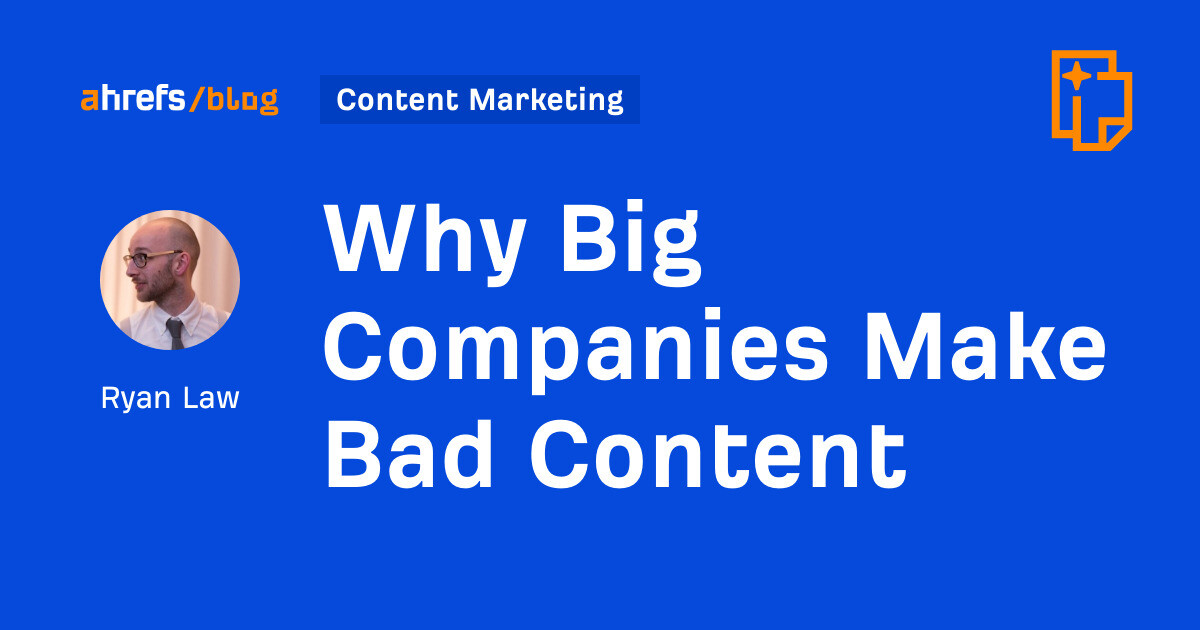
It’s like death and taxes: inevitable. The bigger a company gets, the worse its content marketing becomes.
HubSpot teaching you how to type the shrug emoji or buy bitcoin stock. Salesforce sharing inspiring business quotes. GoDaddy helping you use Bing AI, or Zendesk sharing catchy sales slogans.
Judged by content marketing best practice, these articles are bad.
They won’t resonate with decision-makers. Nobody will buy a HubSpot license after Googling “how to buy bitcoin stock.” It’s the very definition of vanity traffic: tons of visits with no obvious impact on the business.
So why does this happen?
There’s an obvious (but flawed) answer to this question: big companies are inefficient.
As companies grow, they become more complicated, and writing good, relevant content becomes harder. I’ve experienced this firsthand:
- extra rounds of legal review and stakeholder approval creeping into processes.
- content watered down to serve an ever-more generic “brand voice”.
- growing misalignment between search and content teams.
- a lack of content leadership within the company as early employees leave.


Similarly, funded companies have to grow, even when they’re already huge. Content has to feed the machine, continually increasing traffic… even if that traffic never contributes to the bottom line.
There’s an element of truth here, but I’ve come to think that both these arguments are naive, and certainly not the whole story.
It is wrong to assume that the same people that grew the company suddenly forgot everything they once knew about content, and wrong to assume that companies willfully target useless keywords just to game their OKRs.
Instead, let’s assume that this strategy is deliberate, and not oversight. I think bad content—and the vanity traffic it generates—is actually good for business.
There are benefits to driving tons of traffic, even if that traffic never directly converts. Or put in meme format:
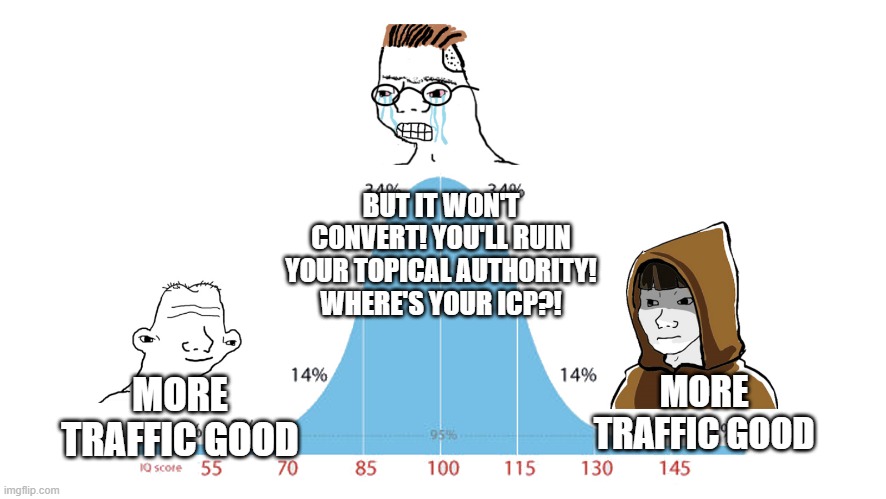

Programmatic SEO is a good example. Why does Dialpad create landing pages for local phone numbers?


Why does Wise target exchange rate keywords?


Why do we have a list of most popular websites pages?


As this Twitter user points out, these articles will never convert…
…but they don’t need to.
Every published URL and targeted keyword is a new doorway from the backwaters of the internet into your website. It’s a chance to acquire backlinks that wouldn’t otherwise exist, and an opportunity to get your brand in front of thousands of new, otherwise unfamiliar people.
These benefits might not directly translate into revenue, but over time, in aggregate, they can have a huge indirect impact on revenue. They can:
- Strengthen domain authority and the search performance of every other page on the website.
- Boost brand awareness, and encourage serendipitous interactions that land your brand in front of the right person at the right time.
- Deny your competitors traffic and dilute their share of voice.
These small benefits become more worthwhile when multiplied across many hundreds or thousands of pages. If you can minimize the cost of the content, there is relatively little downside.
What about topical authority?
“But what about topical authority?!” I hear you cry. “If you stray too far from your area of expertise, won’t rankings suffer for it?”
I reply simply with this screenshot of Forbes’ “health” subfolder, generating almost 4 million estimated monthly organic pageviews:


And big companies can minimize cost. For large, established brands, the marginal cost of content creation is relatively low.
Many companies scale their output through networks of freelancer writers, avoiding the cost of fully loaded employees. They have established, efficient processes for research, briefing, editorial review, publication and maintenance. The cost of an additional “unit” of content—or ten, or a hundred—is not that great, especially relative to other marketing channels.
There is also relatively little opportunity cost to consider: the fact that energy spent on “vanity” traffic could be better spent elsewhere, on more business-relevant topics.
In reality, many of the companies engaging in this strategy have already plucked the low-hanging fruit and written almost every product-relevant topic. There are a finite number of high traffic, high relevance topics; blog consistently for a decade and you too will reach these limits.
On top of that, the HubSpots and Salesforces of the world have very established, very efficient sales processes. Content gating, lead capture and scoring, and retargeting allow them to put very small conversion rates to relatively good use.
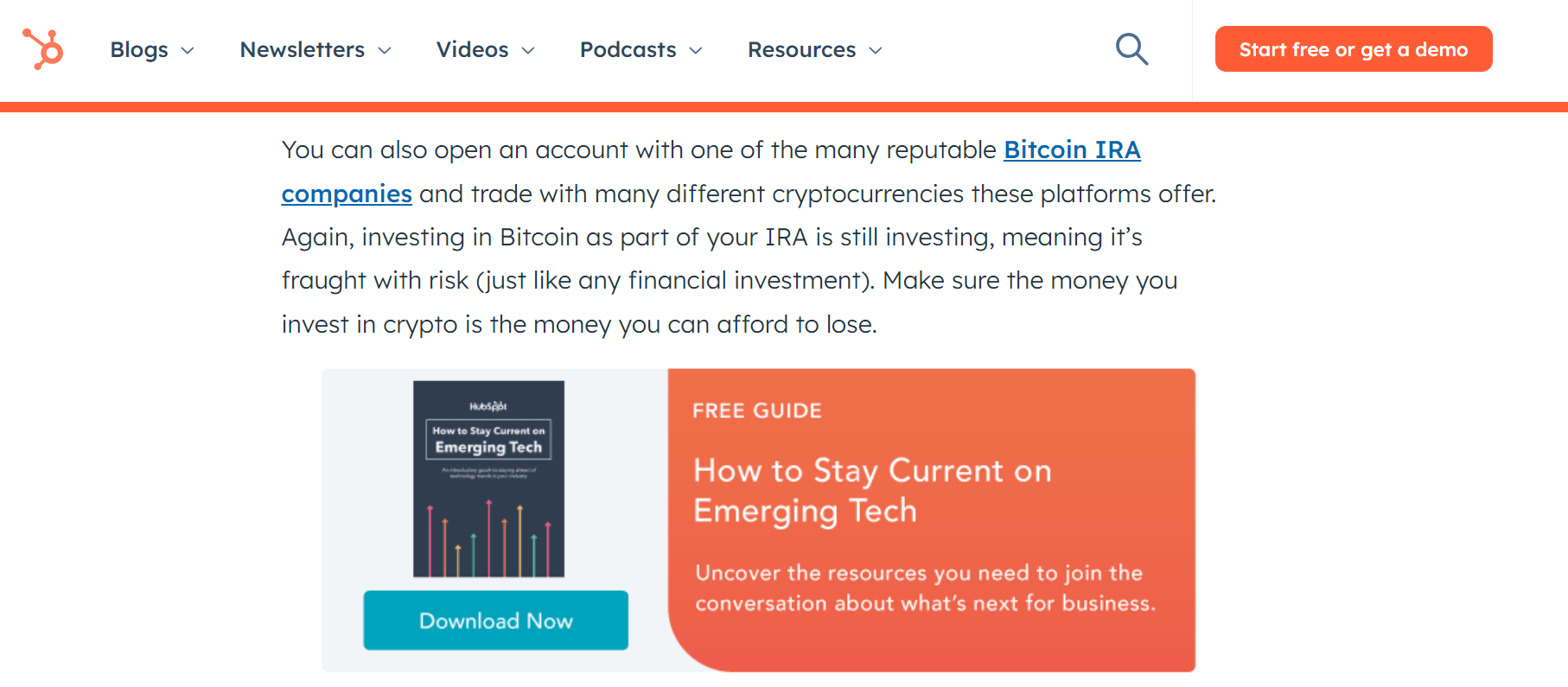

Even HubSpot’s article on Bitcoin stock has its own relevant call-to-action—and for HubSpot, building a database of aspiring investors is more valuable than it sounds, because…
The bigger a company grows, the bigger its audience needs to be to continue sustaining that growth rate.
Companies generally expand their total addressable market (TAM) as they grow, like HubSpot broadening from marketing to sales and customer success, launching new product lines for new—much bigger—audiences. This means the target audience for their content marketing grows alongside.
As Peep Laja put its:
But for the biggest companies, this principle is taken to an extreme. When a company gears up to IPO, its target audience expands to… pretty much everyone.
This was something Janessa Lantz (ex-HubSpot and dbt Labs) helped me understand: the target audience for a post-IPO company is not just end users, but institutional investors, market analysts, journalists, even regular Jane investors.
These are people who can influence the company’s worth in ways beyond simply buying a subscription: they can invest or encourage others to invest and dramatically influence the share price. These people are influenced by billboards, OOH advertising and, you guessed it, seemingly “bad” content showing up whenever they Google something.
You can think of this as a second, additional marketing funnel for post-IPO companies:


These visitors might not purchase a software subscription when they see your article in the SERP, but they will notice your brand, and maybe listen more attentively the next time your stock ticker appears on the news.
They won’t become power users, but they might download your eBook and add an extra unit to the email subscribers reported in your S1.
They might not contribute revenue now, but they will in the future: in the form of stock appreciation, or becoming the target audience for a future product line.
Vanity traffic does create value, but in a form most content marketers are not used to measuring.
If any of these benefits apply, then it makes sense to acquire them for your company—but also to deny them to your competitors.
SEO is an arms race: there are a finite number of keywords and topics, and leaving a rival to claim hundreds, even thousands of SERPs uncontested could very quickly create a headache for your company.
SEO can quickly create a moat of backlinks and brand awareness that can be virtually impossible to challenge; left unchecked, the gap between your company and your rival can accelerate at an accelerating pace.
Pumping out “bad” content and chasing vanity traffic is a chance to deny your rivals unchallenged share of voice, and make sure your brand always has a seat at the table.
Final thoughts
These types of articles are miscategorized—instead of thinking of them as bad content, it’s better to think of them as cheap digital billboards with surprisingly great attribution.
Big companies chasing “vanity traffic” isn’t an accident or oversight—there are good reasons to invest energy into content that will never convert. There is benefit, just not in the format most content marketers are used to.
This is not an argument to suggest that every company should invest in hyper-broad, high-traffic keywords. But if you’ve been blogging for a decade, or you’re gearing up for an IPO, then “bad content” and the vanity traffic it creates might not be so bad.
SEO
Is It Alternatives You’re Looking For?

Whatever the reason, in this article, I’ll share some alternatives to HARO and a few extra ways to get expert quotes and backlinks for your website.
Disclaimer: I am not a PR expert. I did a bit of outreach a few years ago, but I have only been an occasional user of HARO in the past year or so.
So, rather than providing my opinion on the best alternatives to HARO, I thought it would be fun to ask users of the “new HARO” what they thought were the best alternatives.
I wanted to give the “new HARO”—Connectively—the benefit of the doubt.
Still, a few minutes after my pitch was accepted, I got two responses that appeared to be AI-generated from two “visionary directors,” both with “extensive experience.”
My experience of Connectively so far mirrored Josh’s experience of old HARO: The responses were most likely automated.
Although I was off to a bad start, looking through most of the responses afterward, these two were the only blatant automated pitches I could spot.
These responses weren’t included in my survey, and anyone who saw my pitch would have to copy and paste the survey link to complete it—increasing the chance of genuine human responses—hopefully.
So, without further ado, here are the results of the survey.
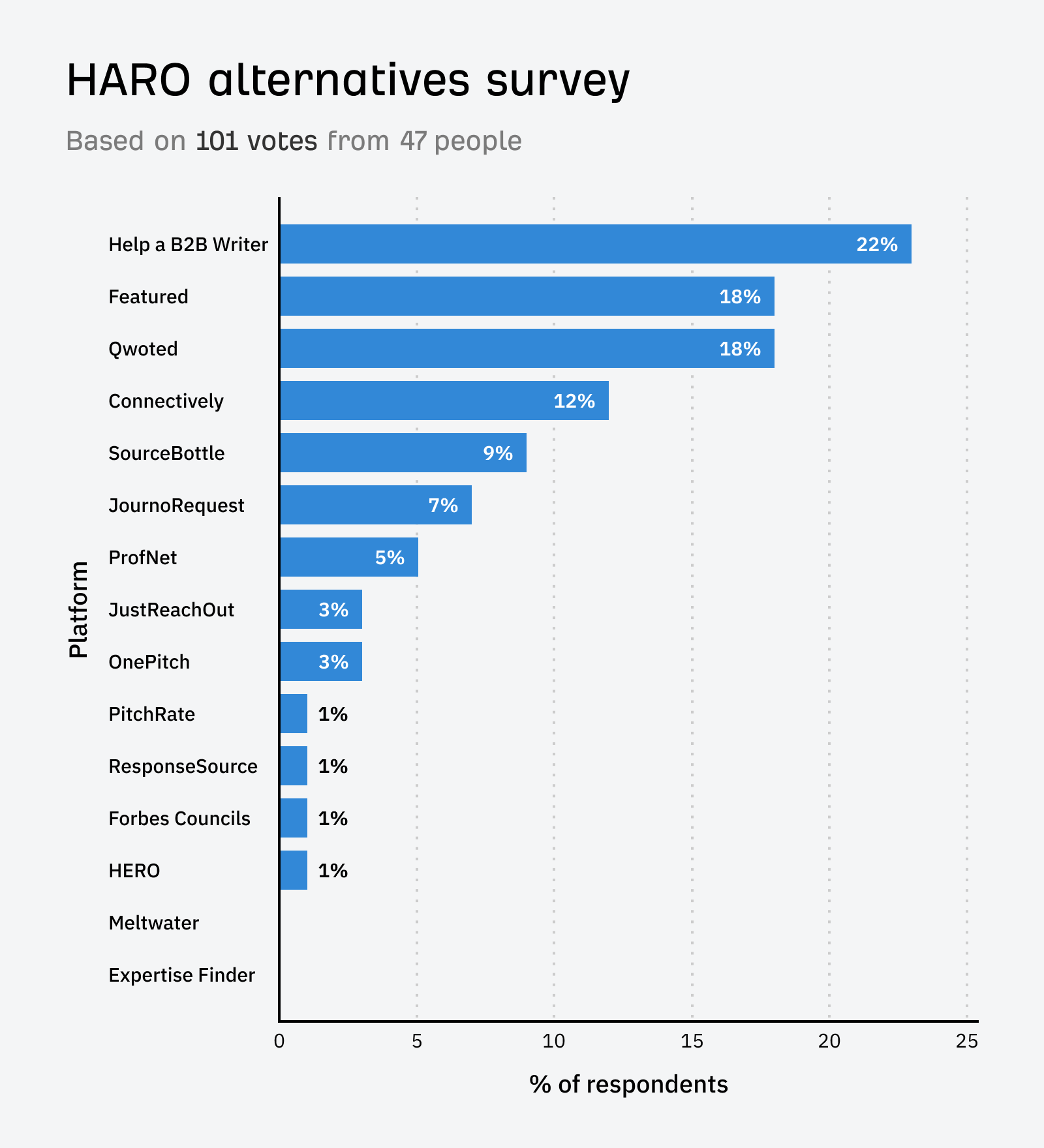

Sidenote.
The survey on Connectively ran for a week and received 101 votes. Respondents could vote for their top three HARO alternatives.
Price: Free.
Help a B2B Writer was the #1 alternative platform respondents recommended. In my survey it got 22% of the vote.
Help a B2B Writer is a platform run by Superpath that is similar to HARO but focused on connecting business-to-business (B2B) journalists with industry experts and sources for their stories.


Price: Free and paid plans. Paid plans start at $99 per month.
Coming in joint second place, Featured was popular, scoring 18% of the vote.
Featured connects journalists with experts and thought leaders. It allows experts to create profiles showcasing their expertise and helps journalists find suitable sources for their stories.


Price: Free and paid plans. Paid plans start at $99 per month.
Qwoted is another platform that I’ve heard talked about a lot. It came in joint second place, scoring 18% of the vote.
Qwoted matches journalists with expert sources, allowing them to collaborate on creating high-quality content. It streamlines the process of finding and connecting with relevant sources.


Price: Free for ten pitches per month
Despite being the “new HARO,” Connectively came 4th on my list, scoring 12% of the vote—surprisingly, it wasn’t even the top choice for most users on its own platform.
Connectively connects journalists with sources and experts. It helps journalists find relevant sources for their stories and allows experts to gain media exposure.
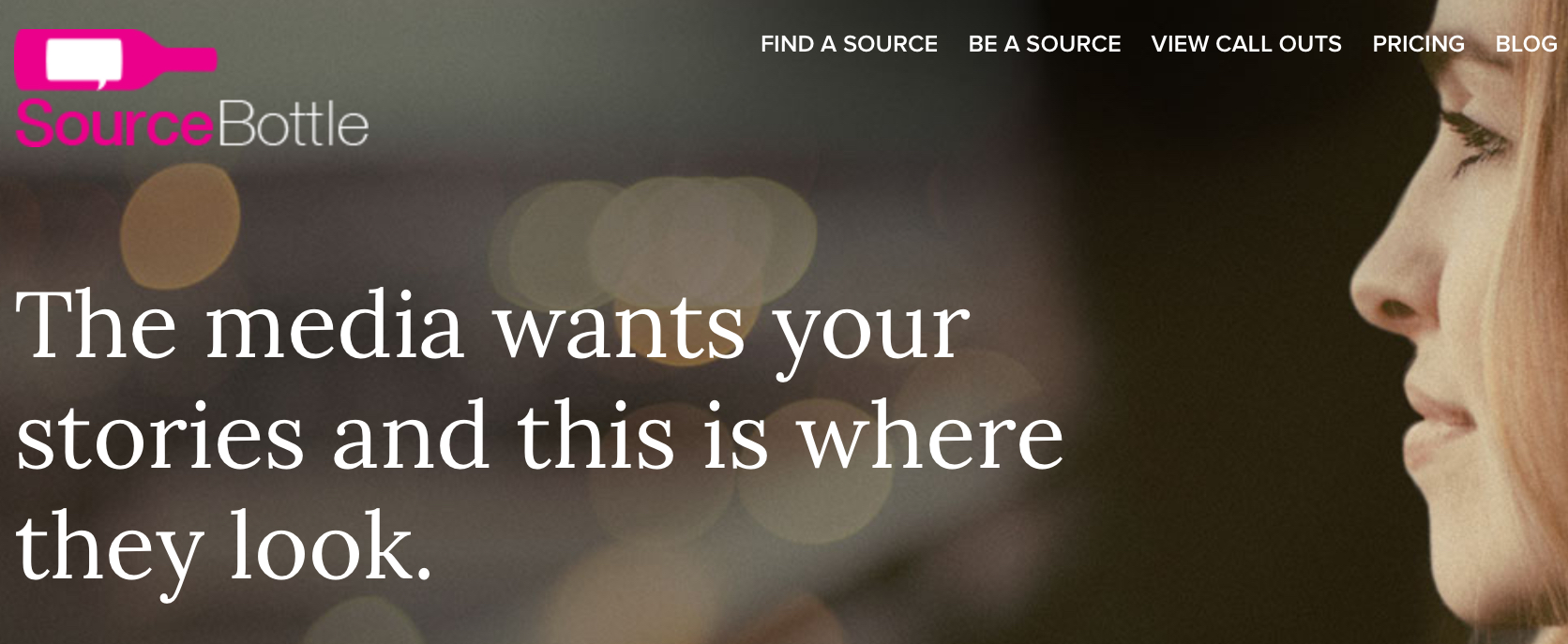

Price: Free and paid plans. Paid plans start at $5.95 per month.
SourceBottle is an online platform that connects journalists, bloggers, and media professionals with expert sources. It allows experts to pitch their ideas and insights to journalists looking for story sources. It scored 9% of the vote in my survey.


Price: Free.
JournoRequest is an X account that shares journalist requests for sources. UK-based journalists and experts often use it, but it can sometimes have international reach. It scored 7% of the vote in my survey.
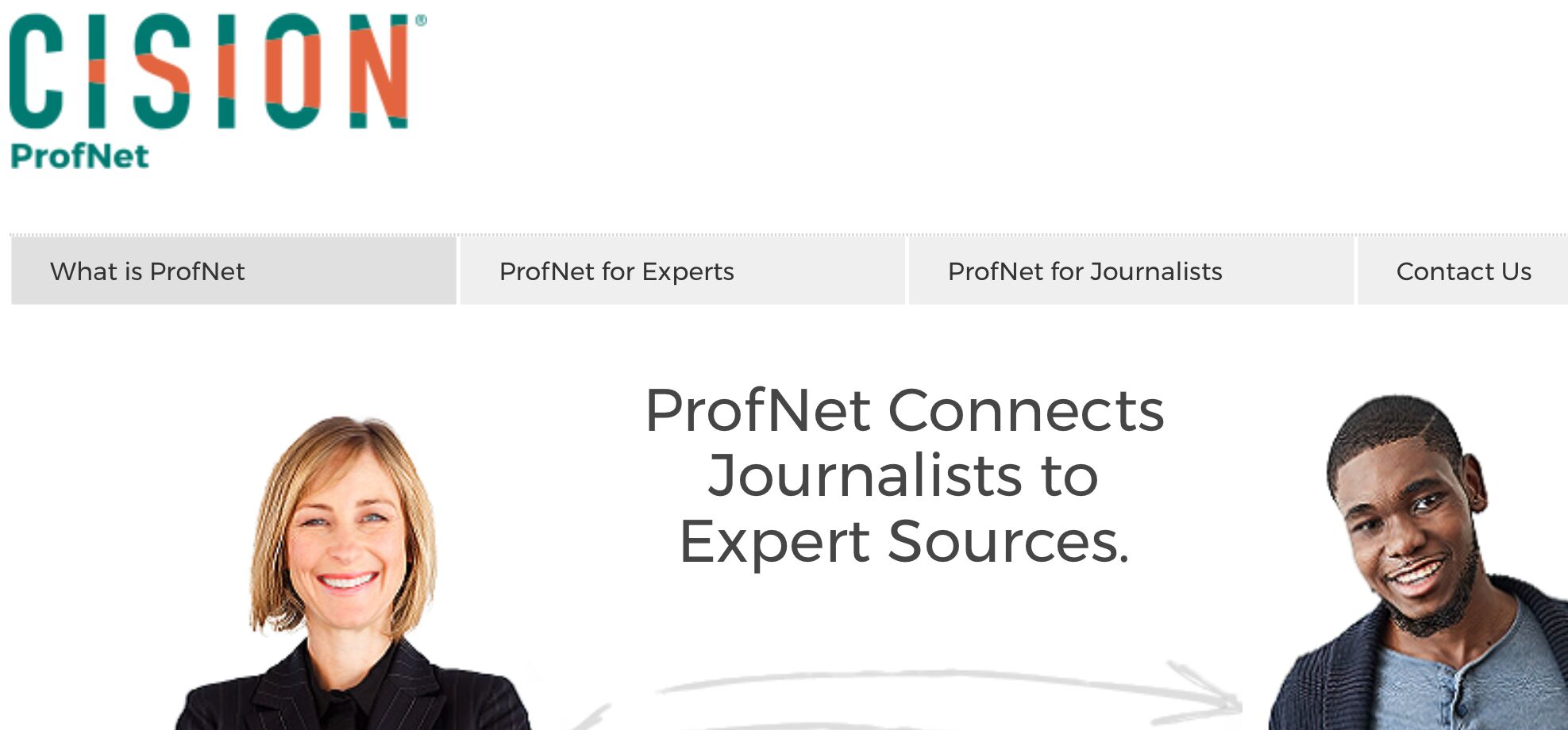

Price: Paid. Plans start at $1,150 per year.
ProfNet connects journalists to expert sources. It helps journalists find knowledgeable sources for their articles, interviews, and other media content. It helps subject matter experts gain media exposure and share their expertise. It scored 5% of the vote in my survey.


Price: 7-day free trial and paid plans. Paid plans start at $147 per month.
JustReachOut is a PR and influencer outreach platform that helps businesses find and connect with relevant journalists and influencers. It provides tools for personalized outreach and relationship management. It scored 3% of the vote in my survey.


Price: 14-day free trial and paid plans. Paid plans start at $50 per month.
OnePitch is a platform that simplifies the process of pitching story ideas to journalists. Businesses and PR professionals can create and send targeted pitches to relevant media outlets. It scored 3% of the vote in my survey.


Price: Free.
PitchRate is a free PR tool that connects journalists and highly rated experts. Useful for subject matter experts looking for free PR leads, media coverage, or publicity. Or journalists looking for credible sources. It scored 1% of the vote in my survey.
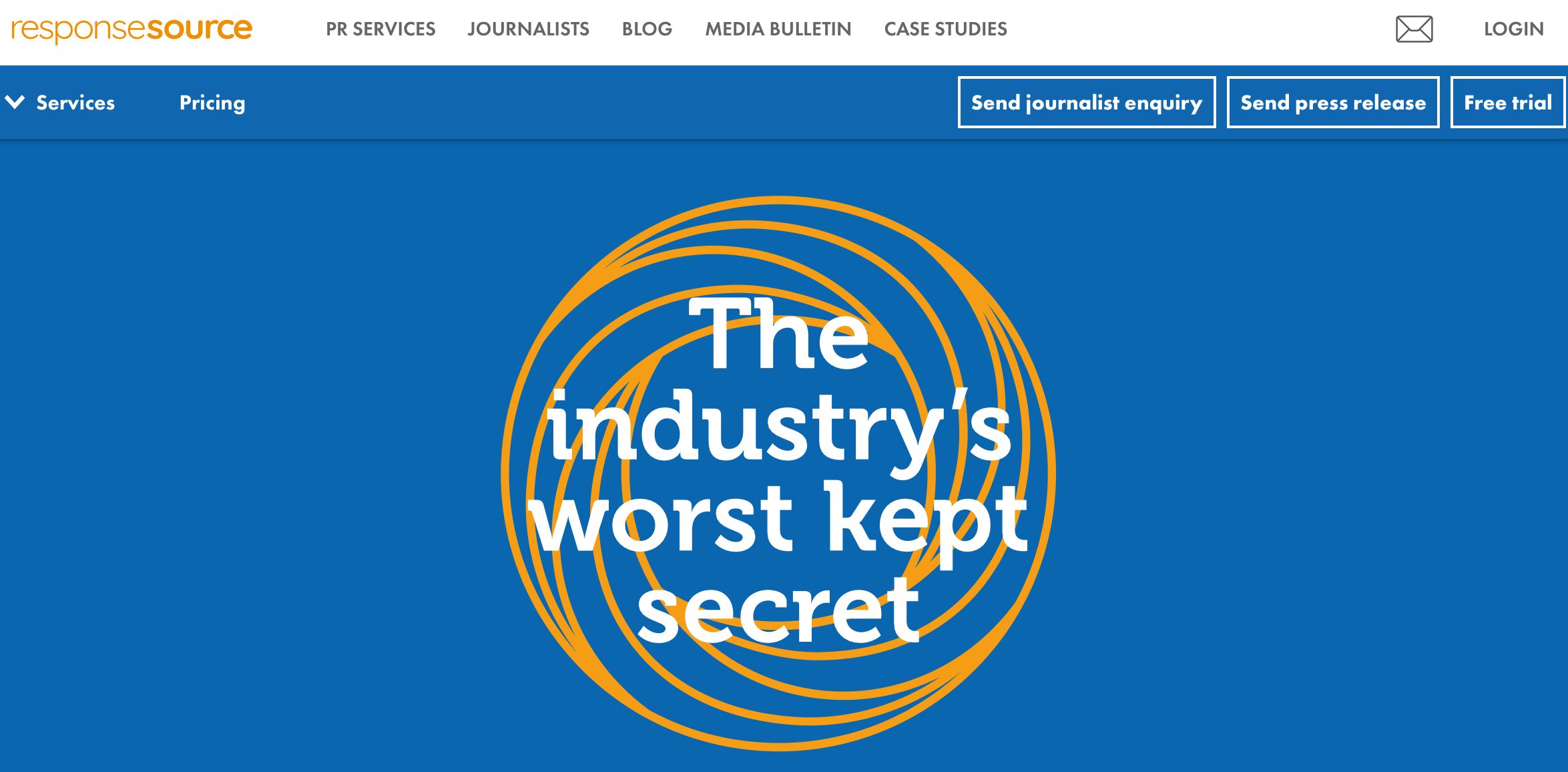

Price: Free and paid plans. Paid plans start at ~$105 per month.
A UK service that connects media professionals with expert sources, press releases, and PR contacts. It scored 1% of the vote in my survey.


Price: Invitation-only platform.
Forbes Councils is an invitation-only community for executives and entrepreneurs. Members can contribute expert insights and thought leadership content to Forbes.com and gain media exposure. It scored 1% of the vote in my survey.


Price: Free.
Yes, you read that right.
HERO was created by Peter Shankman, the original creator of HARO, who said the platform will always be free. It scored 1% of the vote in my survey.
Peter set up the platform after receiving over 2,000 emails asking him to build a new version of HARO.
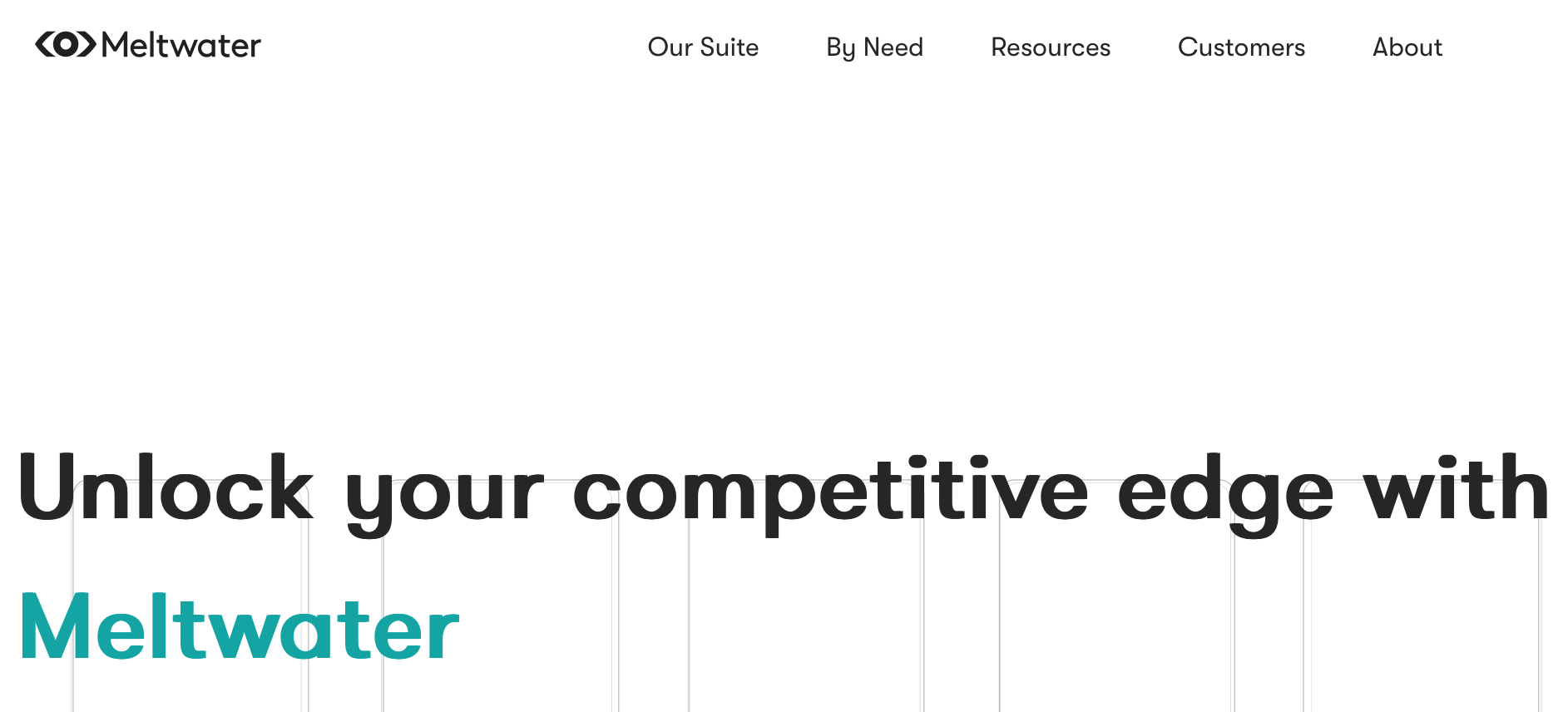

Price: Paid. Sign up for details.
Meltwater received no votes in my survey, but I included it because I’d seen it shared on social media as a paid alternative to HARO.
It’s a media intelligence and social media monitoring platform. It provides tools for tracking media coverage, analyzing sentiment, and identifying influencers and journalists for outreach.


Price: Free.
Expertise Finder also received no votes in my survey, but it was included as I saw it had been recommended as an HARO alternative on LinkedIn. It’s a platform that helps journalists find and connect with expert sources from universities.
HARO had a dual purpose for SEOs: it was a place to acquire links, but it also was a place to get expert quotes on topics for your next article.
Here are a few more free methods outside the platforms we’ve covered that can help you get expert quotes and links.
We’ve already seen that JournoRequest is a popular X account that shares journalist requests for sources.
But you can also follow hashtags on X to access even more opportunities.
Here are my favorite hashtags to follow:
I used to track the #journorequest hashtag to find opportunities for my clients when I worked agency-side, so I know it can work well for quotes and link acquisition.
Here are two opportunities I found just checking the #journorequest hashtag:


Here’s another example from the Telegraph—a DR 92 website:


Certain types of content are more likely to be shared by journalists and PRs than others.
One of these types of content is statistics-based content. The reason? Journalists often use statistics to support their points.
Once they have included your statistic in their post, they often add a backlink back to your post.
We tested this with our SEO statistics post, and as you can see, it still ranks number one in Google.


Another method is to use the Linking authors report in Ahrefs’ Site Explorer. This report shows the authors’ names who link to any website you enter.
You can see which authors link to their site by entering your competitor’s domain. Some of these authors may represent outreach opportunities for your website as well.
- Head to Site Explorer, click on Linking authors
- Type in your competitor’s URL
- Contact any authors that you think may be interested in your website and its content
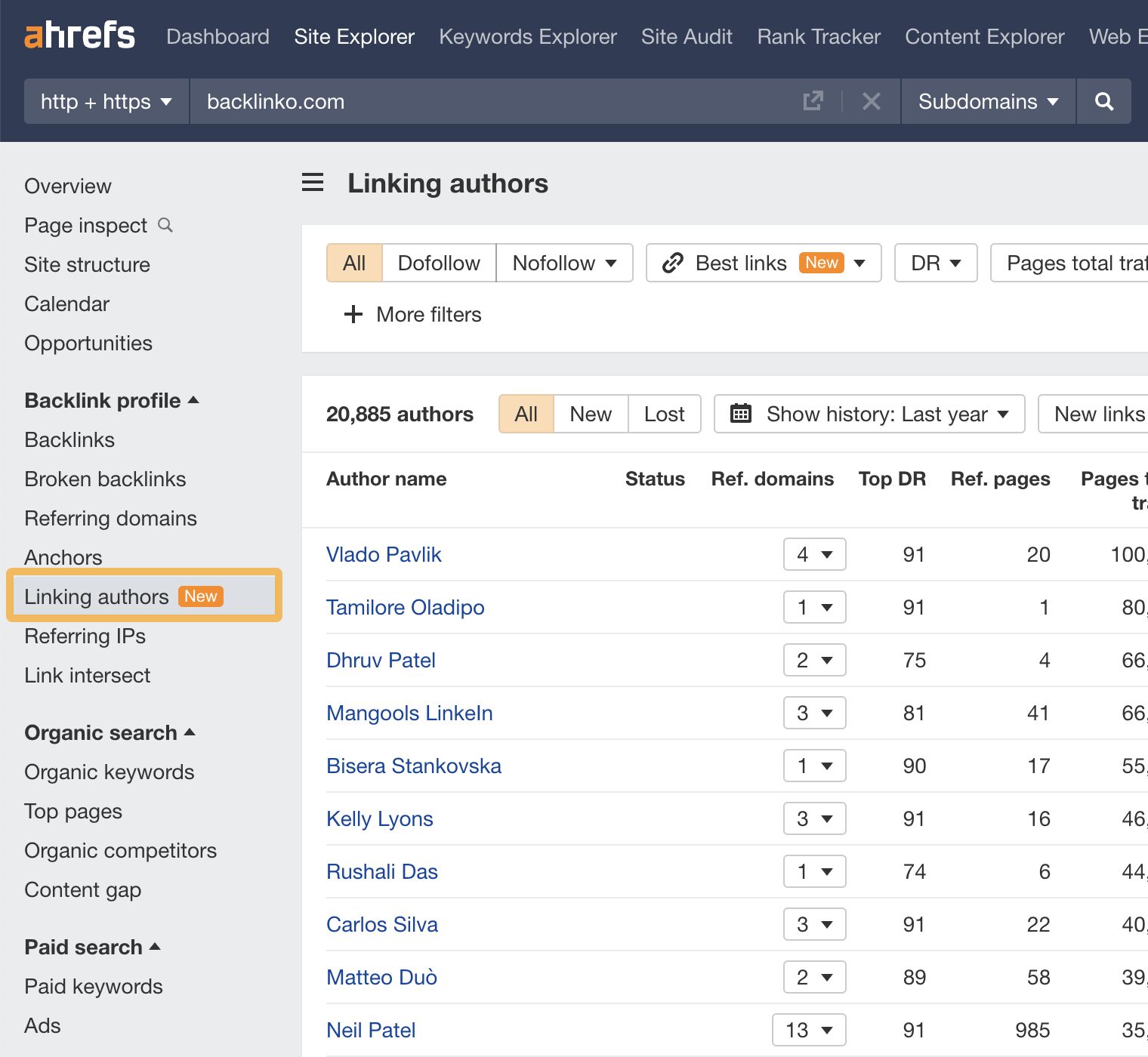

Tip
If you download your website’s linking authors and your competitors into a spreadsheet and put them into separate tabs, you can compare the lists to see which authors are only linking to your competitor’s website.
When I was about to wrap up this article, I was contacted by Greg Heilers of Jolly SEO on LinkedIn.
He said he’d sent 200,000+ pitches over the years and wanted to share the results with me.
These are his top three platforms over the last 1,000 pitches he sent. Interestingly, we can see that it’s similar to my much smaller-scale survey.


Hopefully, the data here speaks for itself. The high-quality links and traffic from HARO alternatives is considerable.
This research shows that Featured gained the most link placements in this campaign.
We have compiled some helpful content related to link building that you can get your teeth into. These hand-picked guides will take you from beginner to expert in no time.
Here are my favorite resources on this topic:
Final thoughts
There are many options for sourcing expert quotes and getting links for your next marketing campaigns. HARO may be dead, but its legacy lives on.
My highly unscientific survey suggests that most “new HARO” users liked Help a B2B Writer the most, but for HARO purists, there really is only one choice—HERO.
Give your favorites from this list a whirl, and let me know if you have any success. Got more questions? Ping me on X. 🙂
-

 MARKETING7 days ago
MARKETING7 days agoEffective Communication in Business as a Crisis Management Strategy
-

 SEO6 days ago
SEO6 days agobrightonSEO Live Blog
-

 SEO5 days ago
SEO5 days agoGoogle March 2024 Core Update Officially Completed A Week Ago
-
SEARCHENGINES6 days ago
Daily Search Forum Recap: April 25, 2024
-

 WORDPRESS5 days ago
WORDPRESS5 days ago9 Best WooCommerce Multi Vendor Plugins (Compared)
-

 MARKETING4 days ago
MARKETING4 days agoNavigating the Video Marketing Maze: Short-Form vs. Long-Form
-

 SEARCHENGINES5 days ago
SEARCHENGINES5 days agoGoogle March 2024 Core Update Finished April 19, 2024
-

 WORDPRESS7 days ago
WORDPRESS7 days agoYour New Favorite Way to Develop WordPress Locally – WordPress.com News














![The Current State of Google’s Search Generative Experience [What It Means for SEO in 2024] person typing on laptop with](https://articles.entireweb.com/wp-content/uploads/2024/04/The-Current-State-of-Googles-Search-Generative-Experience-What-It.webp-80x80.webp)

You must be logged in to post a comment Login